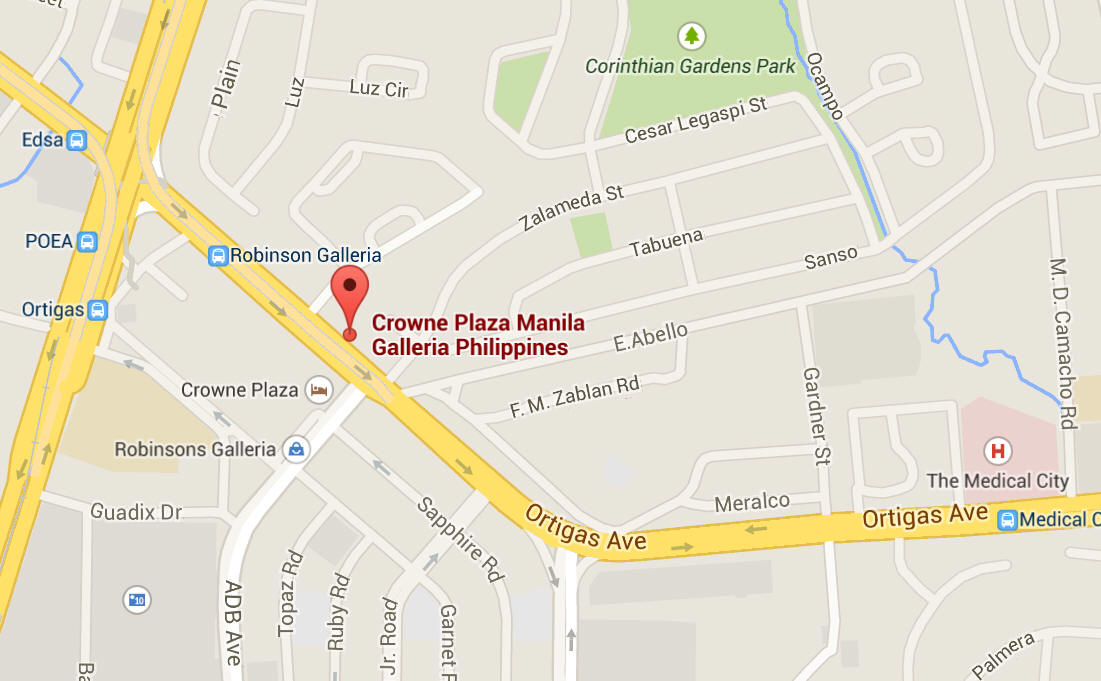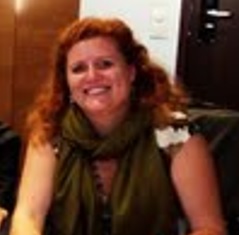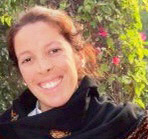|
|
|
|
|
Why gender matters in natural disasters?
|
|
"When disasters strike, they do not discriminate" states a well-known truism in the disaster prevention and response world. By
Sarah Martin |
"When disasters strike, they do not discriminate" states a well-known truism in the disaster prevention and response world. The rich and the poor, men and women, adults and children are all subject to the upheaval that happens during a typhoon or a tsunami or an earthquake. However, this truism while containing truth is not quite accurate. The disaster itself may not discriminate but the way that our societies are built will provide insight into who will be more vulnerable to the impact of the natural disasters. The following examples can show how gender (i.e., the understanding of the different roles that men and women play in society) can make women more vulnerable to natural disasters.
A tsunami strikes mid-morning in Sri Lanka ten years ago and the dead women outnumber the men by four to one. The men mostly survived because they were out at sea in boats or could swim due to their jobs as fishermen. Women were working in their homes, unaware of the dangers of the incoming tsunami and without needed swimming skills, leaving them drowned in their long trailing clothes. Almost 54 percent of the dead were over 70 or under 9 years old. This also left men without wives and families without the support of the older generation who normally minded the children allowing men and women to work and created an increase in children being sent into orphanages.
In 2008, an earthquake killed 87,000 people and made 3.5 million people homeless overnight in Pakistan. In the rush to provide housing, widowed and single women were forced to live in close proximity with unrelated men. In Pakistani society, men protect the family name and women must uphold the honor and integrity of the family name through their reputation. Women in traditional villages are usually chaperoned by male relatives outside the house so that their safety and reputation can be ensured. Women who somehow bring 'dishonor' to their family can be killed by her male relatives as a way to 'regain the family honor.' In the rush to set up housing in the Pakistani winter, humanitarian aid workers (usually male) organized housing situations and relief distribution programs in a 'gender-blind' way that caused women extreme anguish from fear of ruining their "family honor" and denied them and the families that they needed to support much needed humanitarian assistance. Sexual harassment in the camps was also a problem.
Water from the Ganges source in the Himalayas annually rush down the Padme river, often flooding parts of Bangladesh where almost 30 million of mostly impoverished farmers make their living. Because it is women's work to collect drinking water, gather fuel to cook for the family, nurse the sick, and take care of the children, they are closely involved with the environment yet often left out of disaster prevention programs. In the past, government relief programs have denied services to women as they are supposed to rely on their husbands for support. However, the outflow of men working outside the country or dying young leave women-headed households in extreme poverty as they struggled to feed their families and take care of the ill.
In super typhoon Haiyan/Yolanda that struck the Philippines in 2013, almost 40 percent of the healthcare centers were destroyed leaving pregnant women to deliver their babies in unsafe and unclean environments as doctors and midwives struggled to reach them.
Everywhere that natural disasters strike the gender imbalance in power, money, education, and freedom of movement present in everyday society becomes magnified. If women have little ability to own land, become educated, or obtain government services, it becomes even more difficult after a disaster. Yet women are still the "backbone" of the family in many societies and manage to provide for their families, nurse the sick, raise children, and contribute to the community. Looking at their vulnerabilities and strengths and critically assessing our current disaster prevention and response models is key to improving the way that our societies manage natural disasters.
Sarah Martin is a consultant on gender-based violence prevention and response.
References:
Dyan Mazurana, Prisca Benelli, Huma Gupta, Peter Walker: Sex & Age Matter
Erum Burki, Marie Stopes Society: The Pakistan earthquake and the health needs of women
IRIN News: Philippines typhoon affecting maternal health
|
|
|
|
|
Post Cyclone Nargis: The impact on women
|
When Cyclone Nargis struck the coast of Myanmar in May 2008, many women lost their lives. Others were left vulnerable without family, incomes, a way to make a living, or homes and there was very little access to quality sexual and reproductive health care or psychosocial support services.
By
Sarah Martin |
To understand the impact of Cyclone Nargis on women living in the affected areas, the government of Myanmar through the Social Welfare, Relief and Resettlement (DSW) and a Women's Protection Technical Working Group made up of the UN and NGOS did a comprehensive assessment of women's issues to understand what women needed for the humanitarian response.
The most significant impact was the change in household composition with approximately 14 out of every 100 household losing the male household provider leaving widowed women to take care of the remaining family. These female-headed households are the most vulnerable in this male dominated society and when the issue of poverty is factored in, they are extremely vulnerable. 60 percent of these families lived in unsatisfactory shelters and were the highest percentage of low-income groups. Children of female-headed households also frequently drop out of school due to inability to pay school fees, purchase books or uniforms. The women of these households asked the government and humanitarian community for support in finding ways to earn a living so they could support their families. But even with jobs, women are still more vulnerable as in Myanmar it is common for women to earn less than 2/3 of what a man might earn. More than 80 percent of the women-headed households that were contacted post-Cyclone Nargis told assessors that they were in debt and had to take loans from relatives and friends to pay for basics for their family.
This poverty and lack of ability to earn a livelihood caused an increased vulnerability of young women and women-headed households to sexual exploitation by aid workers and community members. People assessed after the Cyclone noted that they believed there was an increase in men pressuring women to trade sex for money, food or favors. There was also an increase in alcohol and drug use amongst men leading to domestic violence, verbal abuse and violence against women.
Eighteen months after Cyclone Nargis, there was a complementary assessment done which noted that the majority of female respondents still felt sad, depressed or hopeless. Two out of three of the respondents did note that there had been an increase in community unity as female elders, friends and women community leaders were providing mental health and financial support to each other. The Women's Protection group developed the Guidelines 'Gender Consideration: In the Aftermath of Cyclone Nargis'�� that outlines the different roles, capacities, vulnerabilities, and needs of both women and men for effective disaster response and management. Using data, findings, and recommendations from previous disasters can help integrate a better understanding of how women are impacted by disasters in order to strengthen planning. Prevention and any programs for future disasters!
Sarah Martin is a consultant on gender-based violence prevention and response.
Adapted from Women's Protection Assessments: Post Nargis (March 2010) Women's Protection Technical Working Group. Yangon, Myanmar.
|
|
|
|
|
Victims of fire: Understanding women's vulnerabilities in urban Bangladesh
|
|
Fire hazards are a common phenomenon in city life. In Dhaka, approximately eight million people crowd the streets, creating a human sea difficult to navigate. Coping with fire hazards in Dhaka dramatically differs from other mega-cities, as one blaze may destruct the path of vulnerable low-income areas within minutes. By
Shamima Akhter |
Commonly, developed countries cope with these life threatening hazards by equipping buildings with tools such as smoke detectors that warn residents of possible fire outbreaks, fire extinguishers as well as clear signs and emergency staircases that are situated within an arm's reach. Whereas officials are working towards this is Dhaka, populations are still at risk of deadly fire hazards.
Within minutes, fires can burn buildings to the ground. Its within these initial moments when the blaze sets aflame that emergency responders need easy access to the fire site. In Dhaka, emergency responders access to the fire site is a serious challenge as even pedestrians are known to get stuck in human traffic jams.
Dhaka's risk to set aflame
Electrical shorts, cigarette and mosquito coils burning, a forgotten pot atop a kitchen stove, these everyday mishaps put Dhaka at risk of setting aflame as communities live close, and households often lack preparedness measures. Household fires are responsible for the greatest loss of life and property in the urban areas in Bangladesh. On top of this, public squalors, areas where the most vulnerable reside, experience the most frequent number of unexpected fires each year.
Household accidents are not the only fire instigators. Warehouses with chemicals and other types of inflammable materials are commonly situated in residential and commercial areas in Dhaka. Furthermore, unauthorized electrical and gas pipeline connections can be found throughout the city.
Additionally, unplanned city growth has resulted in dense developments with narrow roads in some areas. In the event of a fire, it becomes very difficult for fire trucks to approach these areas.
Unplanned city growth has also lead to the development of congested low-income areas that are commonly constructed with materials that are easily flammable, allowing for the flame to sweep through communities without a notice.
There are many people in the city who lack fire safety knowledge, or the precautions one should take to prevent a fire at their home or workplace. Additionally, few know preventive measures a community should take to extinguish fires initially, before the fire trucks arrive.
'I heard screaming that night and saw the blaze. I used to live just beside that house. The house was locked from the outside. The man of the house has left and looked the room due to security reasons. All the other members of the household were sleeping at the time when the fire occurred. They were all burned," one female participant recalled.
Fires claim women's lives 'more frequently'
A pattern can be found among the victims of fire hazards in Dhaka; most of the victims are women and children. There are several reasons why women and children are generally more vulnerable than men to fire hazards. The primary role of a woman according to Bangladeshi cultural values is to be a mother and caregiver of a family. She is responsible for taking care of the household at all times. Even during a fire hazard, women have to take responsibility of the household, other family members and belongings. This extra responsibility slows their evacuation process and as a result sometimes they are not able to escape the fire.
Moreover, according to Bangladeshi culture's clothing practice, it is standard for women to wear a 'Sharee'. It is hard to run wearing the traditional Sharee. Adding reasons why women are less able to escape fires. Also there is no proper system to warn people of possible fire incidents in Bangladesh. Generally, women who are inside the house do not get information about nearby fire hazards. By the time they hear news of the fire, it is too late for them to evacuate.
Recalling recent incidents
There have been several incidents of fire in Dhaka's recent past. In Ward 47 (Jafrabad Area), there was a significant fire hazard in 2011, at the Bottola Polpar slum area. The fire started at night due to an electric short circuit (ADPC Field Data was collected on 27/9/12). It was reported that five people were killed in that fire. Four of the five were women and one was a child. The fire destroyed about 700-800 slum shelters.
Recently, early on the morning of 18 November 2012 (Daily Star, 19 November 12), in Boubazar, a fire took the lives of eleven people. Out of the eleven victims six were women and the rest were children. Some of these women were not able to escape because they could not bear to leave their children. The men could escape because they jumped from the high boundary wall enclosing the area. On the other hand, women could not because of the small children on their laps.
Recognizing the importance of women in fire safety
Women play an important role in the development of Bangladesh. It is important to ensure that women are safely rescued in the event of a fire hazard. Since kitchen fires are one of the most common causes of fire, training should be provided to women to ensure that they are aware of the potential causes of a kitchen fire.
Basic training should also be provided to women on their reactions during the event of a fire. To increase safety awareness of fire incidents, educational materials informing people about the causes of fire hazards and the 'do's and don'ts' during a fire should be disseminated in each community and included in school curriculum. Additionally, this type of information can be published in print media and broadcasted in multimedia to impact a wider audience.
Shamima Akhter previously served as Gender Specialist with ADPC. This article was first published in March 2013.
|
|
|
|
|
Is emergency response different for women and men?
|
|
Numerous people are displaced each year due to climate related events. People are forced to leave their homes and find a new location to build their lives, which can be extremely demoralizing for them. Often times, these moves are permanent and people are in need of support to rebuild their livelihoods.
The following blog explores displacement due to climate change and the government's capacity to provide for their citizens, specifically gender specific support. Often times, women bear the brunt of displacement.
By
Alexandra J. Robinson |
The displacement of people and human migration as a result of environmental factors is not a new phenomenon. What is new, however, is the human cause of the degradation of the environment, and the magnitude of the movement, both current and expected. While the impact of climate change induced displacement is indiscriminate, it is undoubtedly the case that it will affect those regions in which governments lack sufficient resources and governance capacity to respond and protect their citizens. It is certain that displacement will occur in the mega deltas of Asia, and small island countries in the Pacific. Movement is likely to be internal and long term rather than temporary relocation. Smaller numbers of displaced people will cross international borders, especially from those states predicted to be submerged beneath rising sea levels. Women will experience the disproportionate impact of climate change within these displaced communities in the region.
While experts agree that climate change is happening, the extent of the effect upon people and their movement remain estimations and are still controversial. The UN Secretary General estimates that between 50 and 350 million people could be displaced. This estimate is consistent with other estimates that predict that by 2050, there may be as many as 200 million people displaced by environmental impacts due to climate change. Moreover, the Stern Review and the United Nations High Commissioner for Refugees (UNHCR) and the Office of the High Commissioner for Human Rights (OHCHR) assert that in coming decades climate change displaced people will number in the hundreds of millions. This includes people displaced from a sudden onset of climate related disasters as well as slow onset events such as desertification and erosion as climate change affects freshwater and food production. There are also a number of people who are unable to migrate due to their financial insecurity; however these numbers are not measurable.
In times of natural disaster women bear the brunt of the displacement. Not only are they charged with caring for their families with limited or no resources, but they are also vulnerable to sexual exploitation, trafficking and other forms of gender based violence. Women and girls are preyed upon, particularly as female heads of households, to exchange sex for basic humanitarian aid including food, water or shelter. In an era which will witness increasing numbers of displaced men, women and children, the effect on women and girls will be unimaginable. To make matters worse, in cases of slow degradation, it is more likely to be the men in the community who make the decision how and when the families move to new locations. This means that women, whose lives are being irrevocably changed, are not consulted.
There is consensus that there are gaps in protection provided to displaced people who are fleeing climate change within international law. Women and girls (who will endure the greatest impacts of climate change) are not and will not be accorded the same legal protection as either refugees or internally displaced people who are moving as a result of conflict (for example).
In light of extensive scientific evidence on the effects of climate change on the global environment and the sobering projections on climate change displacement in coming decades, inaction by the international community is untenable. That is, the inertia of environmental degradation caused by climate change means that there will be further degradation and displacement of people, regardless of any mitigation efforts from the international community. In essence, there is an opportunity to plan and prepare for displaced communities, despite international and domestic political wrangling, to provide the best possible protection.
Alexandra J. Robinson is a lawyer and Protection and Climate Change Specialist.
References:
Intergovernmental Panel on Climate Change, About IPCC: Why the IPCC Was Created (1990) Intergovernmental Panel on Climate Change
United Nations Secretary General: Climate change and its possible security implications: report of the Secretary General, UN GAOR, 64th sess, Agenda Item 114, UN Doc A/64/350 (11 September 2009) 54.
Norman Myers, "Environmental Refugees: An Emergent Security Issue" (Paper presented at the 13th Economic Forum, Prague, 23-27 May 2005) 2, 1.
Nicholas Stern, The Economics of Climate Change: Stern Review (Executive Summary) (2007)
|
|
|
|
|
Addressing gender-based violence in crises in the asia and the pacific region
|
|
Gender-based violence (GBV) is still an issue in Asia. Despite the many gains for women in the region GBV still exists, especially when it comes to disaster preparedness. In this blog, the challenges in addressing GBV and the positive aspects that can be built upon in disaster management are explored. By
Devanna de la Puente |
Gender-based violence, (GBV) which includes domestic violence, sexual assault, and other violence against women and children, particularly girls, occurs throughout the countries within the Asia-Pacific region. Due to the diversity of ethnicities and religions in this region, different customary practices apply to different groups. Gender roles might differ between sub-regions and within some countries there may be a variety of harmful traditional practices against women.
Despite having made gender equality progress in education, economic development, and political participation, the Asia-Pacific region still shows that GBV in its multiple forms are daily realities for millions of women and children. This includes GBV in its worst forms: honor killings and dowry deaths. Although several of the countries in the region are considered middle income countries this doesn't always translate to quality services for GBV survivors. Not all governments have the ability to respond adequately to the needs of these survivors, nor do they address the needs of vulnerable women in humanitarian response.
Even countries that have strong gender and women's rights architecture have not incorporated the need and understanding of gender analysis in their disaster preparation activities or their humanitarian response to emergencies. There continues to be a need for ongoing technical expertise to build the capacity of government, civil society and organizations to better respond to gender and GBV in emergencies.
For example, while the Philippines scores high on gender equality arriving at 9th in the gender gap index of 2013, prevalence of GBV including domestic violence and sex trafficking is a national concern. Before the typhoon, in the most affected areas, the GBV rates were higher than the national average. One in five women (20%) reported having experienced at least one incident of physical violence since the age of 15. In the three regions most-affected by Typhoon Yolanda/Haiyan (Western Visayas, Central Visaysa and Eastern Visayas), the reported rates are even higher at 22%, 28%, and 24%, respectively. This reality compounded by displacement, loss of homes, jobs and the breakdown of the police, social welfare, and healthcare system, only increased vulnerability and risks to GBV, and a deteriorating situation for women and children, particularly girls. The lessons learned from Typhoon Haiyan/Yolanda offer a chance for other Asian countries to better prepare to respond to GBV in natural disasters.
Some of the key challenges for addressing GBV in disasters in Asia include:
- Due to a small number of specialists who can respond to GBV, response is often limited because of the wide geographical scale of the disasters;
-
In natural disasters there is a continuous population movement from place to place in short periods of time, which is a challenge when trying to follow up with GBV survivors, as well as establishing safe spaces in one location;
- Often conflict-affected areas are also affected by floods, typhoons and earthquakes, making women even more vulnerable and difficult to reach.
While the region faces complex challenges, there are several positive aspects that can be built upon to improve response to GBV in disasters. These include:
- Governments and national disaster management authorities already have some capacity in areas of gender or cross cutting issues which can be built upon.
- There are many strong women's rights movements and national networks of community-based organizations that can provide strong technical expertise on gender and women's rights throughout the region at the regional and country level.
- The region has a commitment to Disaster Risk Reduction that can be used to promote gender elements, ensuring women's engagement as well as gender equality throughout these initiatives.
- Strong regional networks in the sub regions, such as SAARC and ASEAN or UN led programs, such as the IASC regional network for Asia Pacific, offer the opportunity to work through regional platforms to promote areas related to gender, GBV and protection;
- Due to recurrent and cyclical natural disasters in the region, there is an opportunity to learn from previous disasters and position GBV prevention and response into disaster preparedness throughout Asia.
Devanna de la Puente serves as Inter-agency Regional Emergency GBV Advisor for Asia and the Pacific, IASC GBV AoR, hosted by UNFPA.
References:
World Economic Forum Gender gap index ranking 2013
Philippines National Demographic and Health Survey (2008)
Philippines, GBV Sub-cluster – Typhoon Yolanda – Secondary Data Review 2013
South Asian Association for Regional Cooperation
Association of South East Asian Nations




